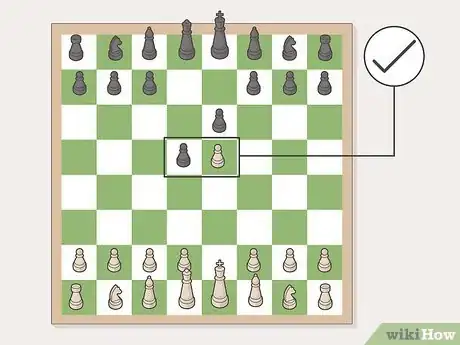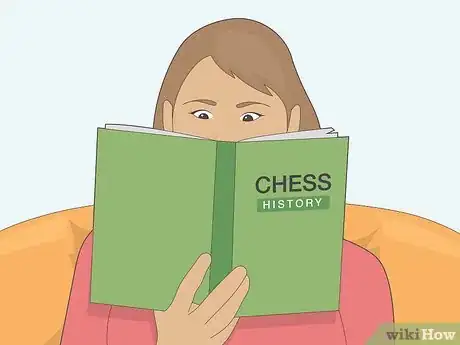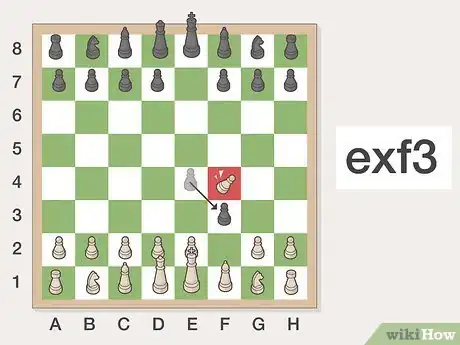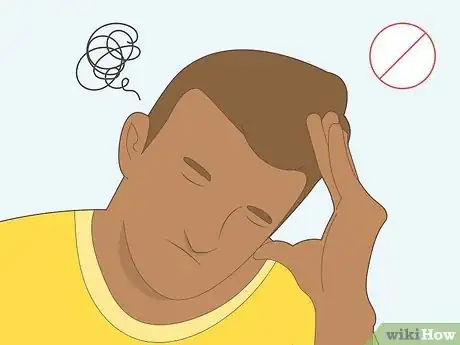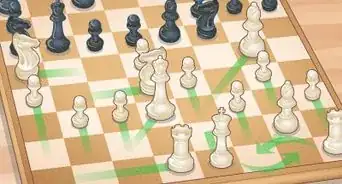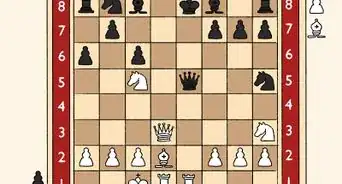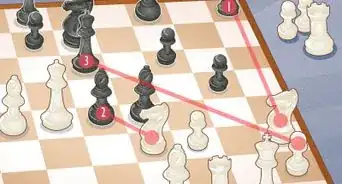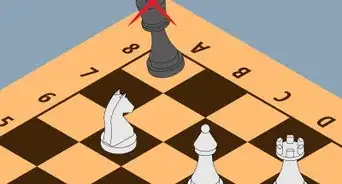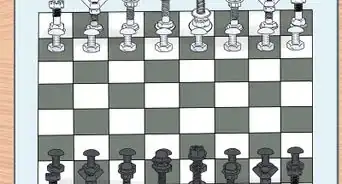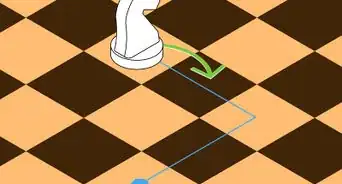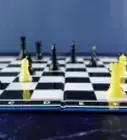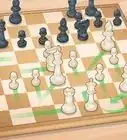This article was co-authored by Sahaj Grover. Sahaj Grover is a Chess Grandmaster, World Champion, and coach, who attained his Grandmaster title at the age of 16. He has been a World Junior Bronze Medalist, World U10 Champion, South African Open 2017 & 2018 Champion, and the Winner of the Arnold Classic 2018 & 2019. Sahaj is known for dynamic attacking skills and being an excellent endgame player.
This article has been viewed 41,755 times.
En passant is one of two special moves in chess (the other being castling). In en passant, a pawn can capture a pawn to its sides. En passant can be tricky for beginner players to grasp. Nevertheless, en passant is fathomable to even beginner players, yourself included.
Steps
-
1Understand how en passant works. Normally, pawns can only capture pieces one square diagonal to them. With en passant, a pawn can capture a pawn to its side.[1]
Did you know? "En passant" translates from French to English as "in passing".[2]
-
2Make sure you can legally play en passant. En passant cannot always be played if opposing pawns are adjacent. There are several requirements for playing en passant.
- You can only take by en passant right after the pawn you'd be capturing moved. If you do not take en passant on the subsequent move you have forfeited the ability to take en passant. Likewise, if you ended up in the same position in any way other than your opponent moving their pawn up two spaces you cannot take by en passant.[3]
- Your opponent must have moved their pawn two squares forward. If the position was reached in another way you cannot play en passant.[4]
- Both pawns must be on the fifth rank (if you're playing white) or the fourth rank (if you're playing black).
- Only pawns can be taken by en passant.
- Only pawns can play en passant.
- If any of these do not apply to you (or your opponent) you cannot play en passant.
Advertisement -
3Understand the history of en passant. En passant was added when pawns started being able to move two squares forward. The rule was included so pawns could not evade capture by moving two squares forward and become "passed pawns" (pawns that no other pawn can attack). Passed pawns have a much easier time promoting, so en passant was created to keep games fair.[5] This rule was added in the fifteenth century.[6]
-
4Understand how to notate en passant. Using algebraic notation, en passant is notated the same as a pawn capture if you hadn't captured en passant.[7] To notate a pawn capture:
- Write the file the pawn started on in lowercase.
- Write an "x" to signify the move was a capture.
- Write the square the pawn is now on. (e.g. exf3)
-
5Don't be discouraged if it's still confusing. En passant is confusing. Chess is considered confusing. Don't be discouraged. You'll figure it out eventually.
- Try looking online for visuals. Some players find it easier to understand this way.
- Learn the basics and then improve your skills.
- You can watch top players of chess playing the game.
- Keep yourself up to date with the trends.
Warnings
- Some players may call you a "cheater" if you play en passant. Try showing them this article and other resources to prove the move's validity. Some players may still call you a cheater and force you to take back your move.⧼thumbs_response⧽
References
- ↑ https://www.chess.com/terms/en-passant
- ↑ https://www.chess.com/terms/en-passant
- ↑ https://www.chess.com/terms/en-passant
- ↑ https://www.chess.com/terms/en-passant
- ↑ https://www.chess.com/terms/en-passant
- ↑ https://simplifychess.com/articles/what-is-en-passant-in-chess/index.html
- ↑ https://www.chess.com/terms/en-passant

